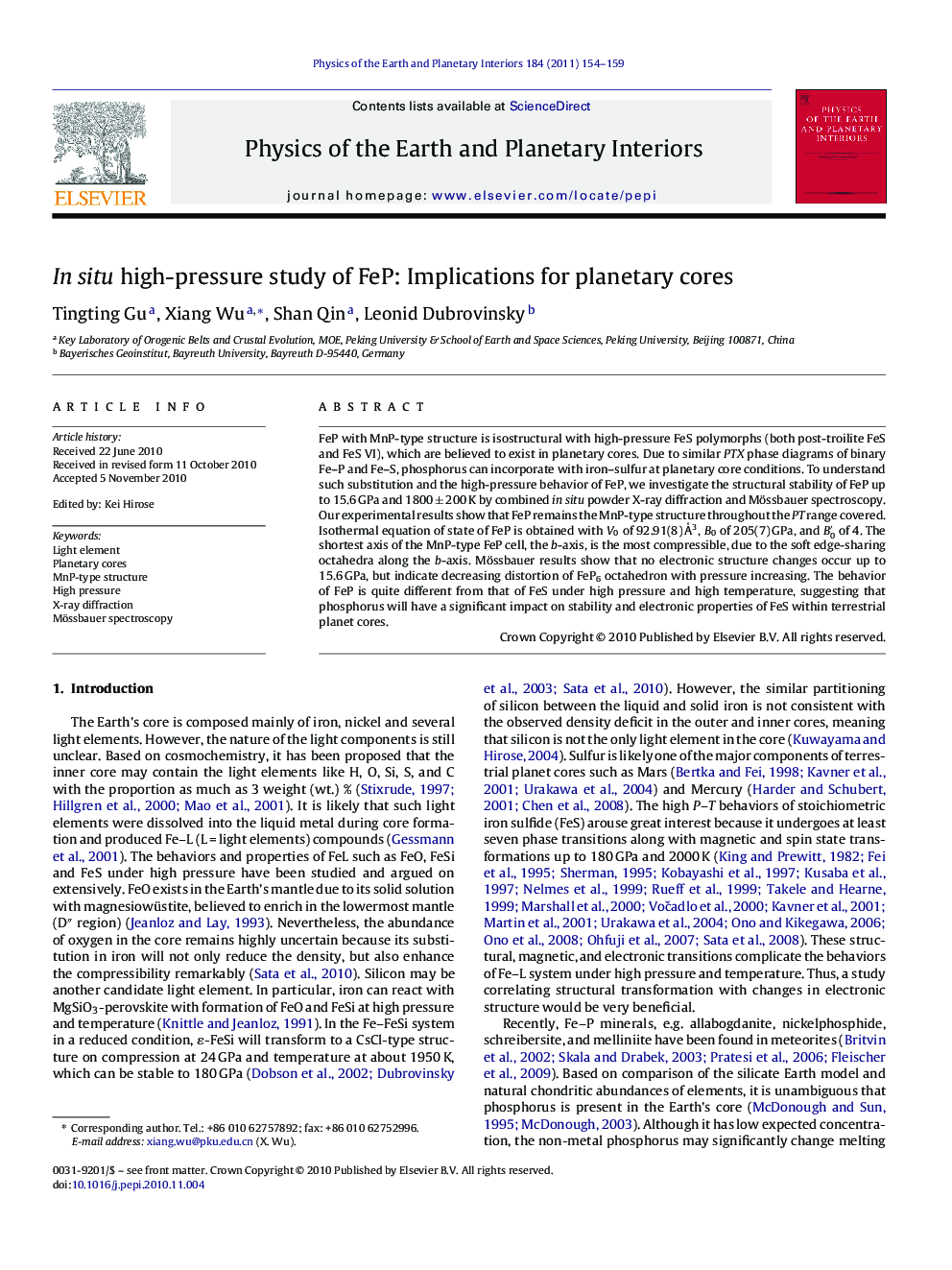| Article ID | Journal | Published Year | Pages | File Type |
|---|---|---|---|---|
| 4741999 | Physics of the Earth and Planetary Interiors | 2011 | 6 Pages |
FeP with MnP-type structure is isostructural with high-pressure FeS polymorphs (both post-troilite FeS and FeS VI), which are believed to exist in planetary cores. Due to similar PTX phase diagrams of binary Fe–P and Fe–S, phosphorus can incorporate with iron–sulfur at planetary core conditions. To understand such substitution and the high-pressure behavior of FeP, we investigate the structural stability of FeP up to 15.6 GPa and 1800 ± 200 K by combined in situ powder X-ray diffraction and Mössbauer spectroscopy. Our experimental results show that FeP remains the MnP-type structure throughout the PT range covered. Isothermal equation of state of FeP is obtained with V0 of 92.91(8) Å3, B0 of 205(7) GPa, and B′0B′0 of 4. The shortest axis of the MnP-type FeP cell, the b-axis, is the most compressible, due to the soft edge-sharing octahedra along the b-axis. Mössbauer results show that no electronic structure changes occur up to 15.6 GPa, but indicate decreasing distortion of FeP6 octahedron with pressure increasing. The behavior of FeP is quite different from that of FeS under high pressure and high temperature, suggesting that phosphorus will have a significant impact on stability and electronic properties of FeS within terrestrial planet cores.
